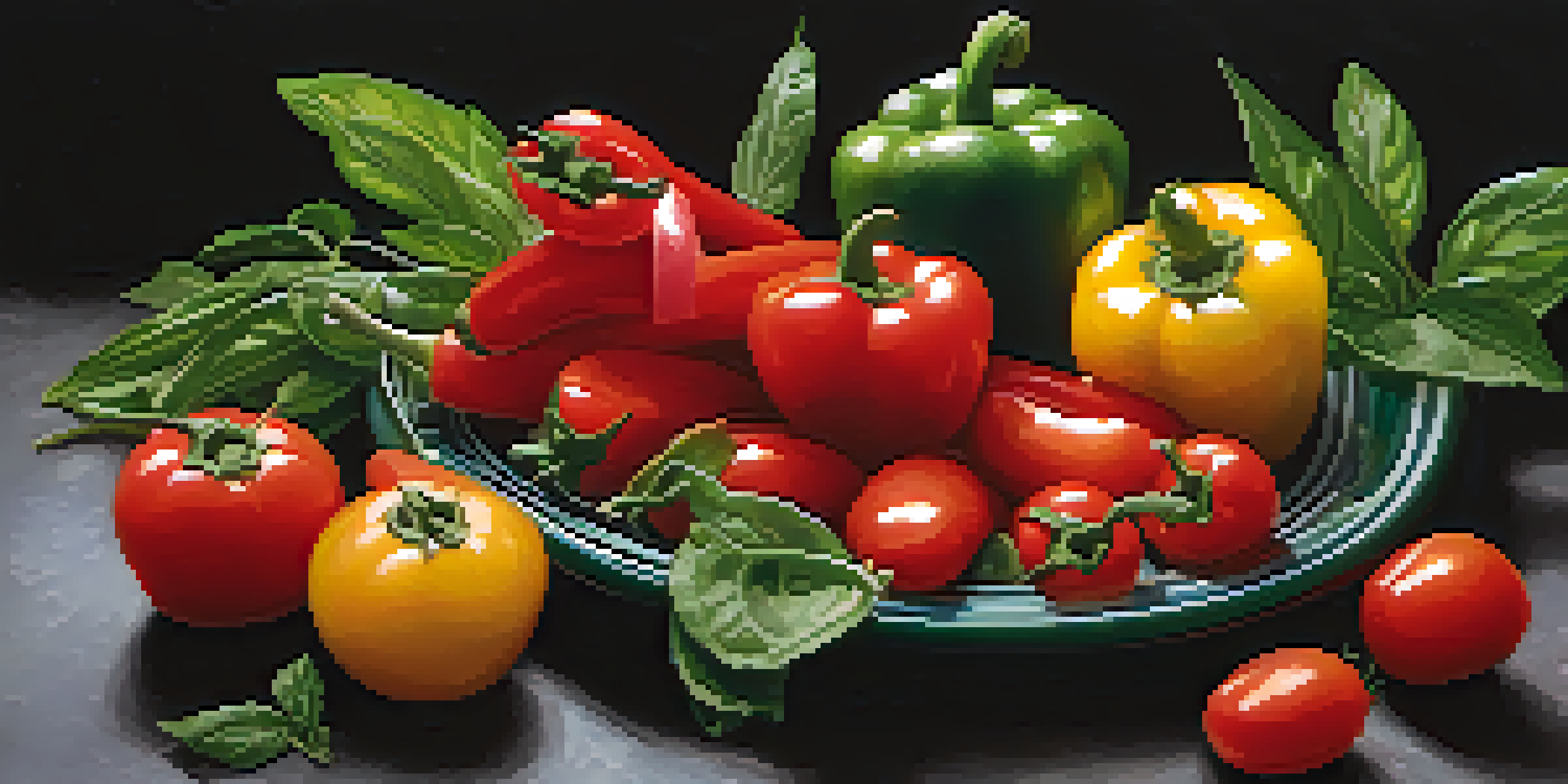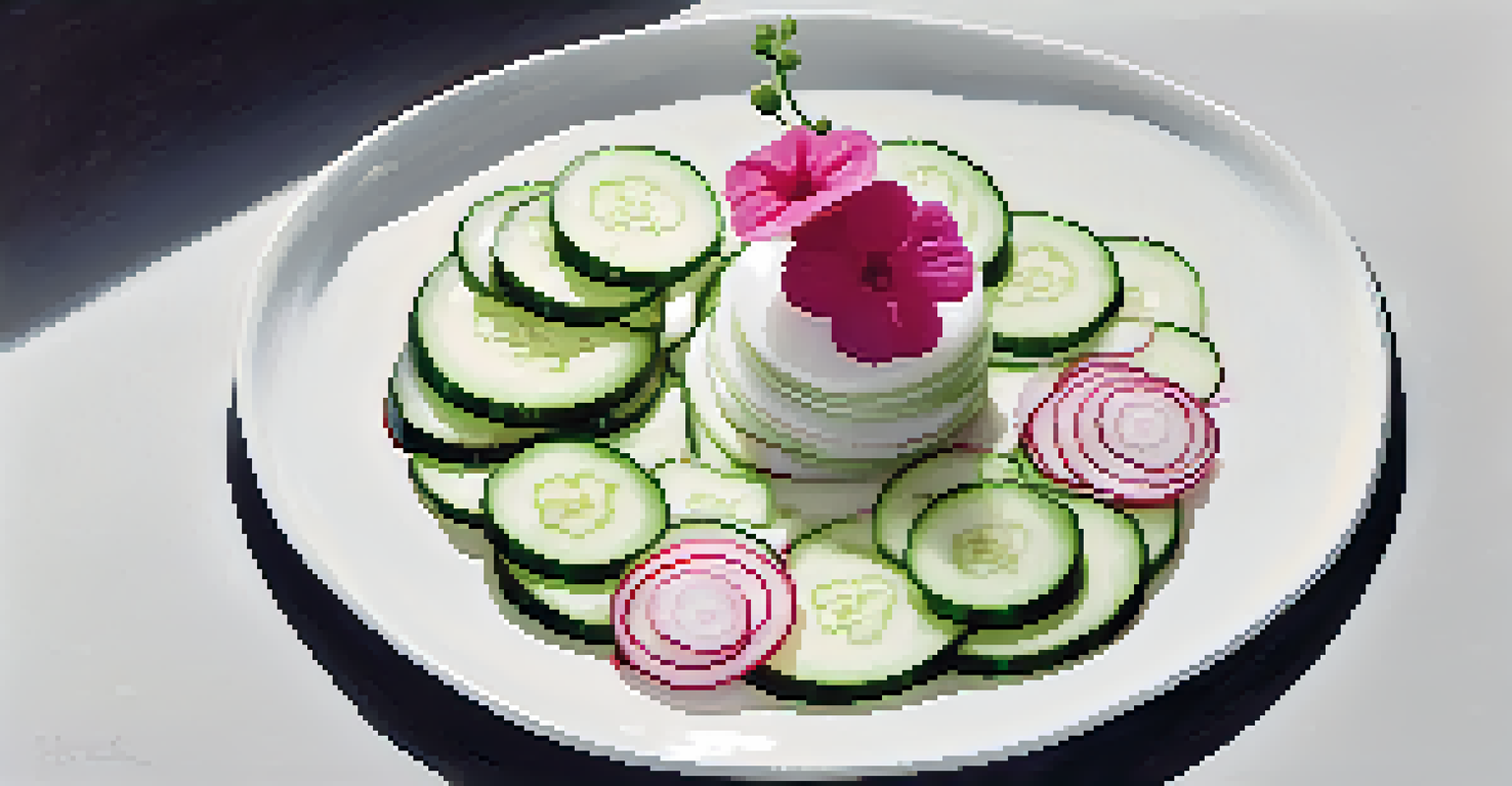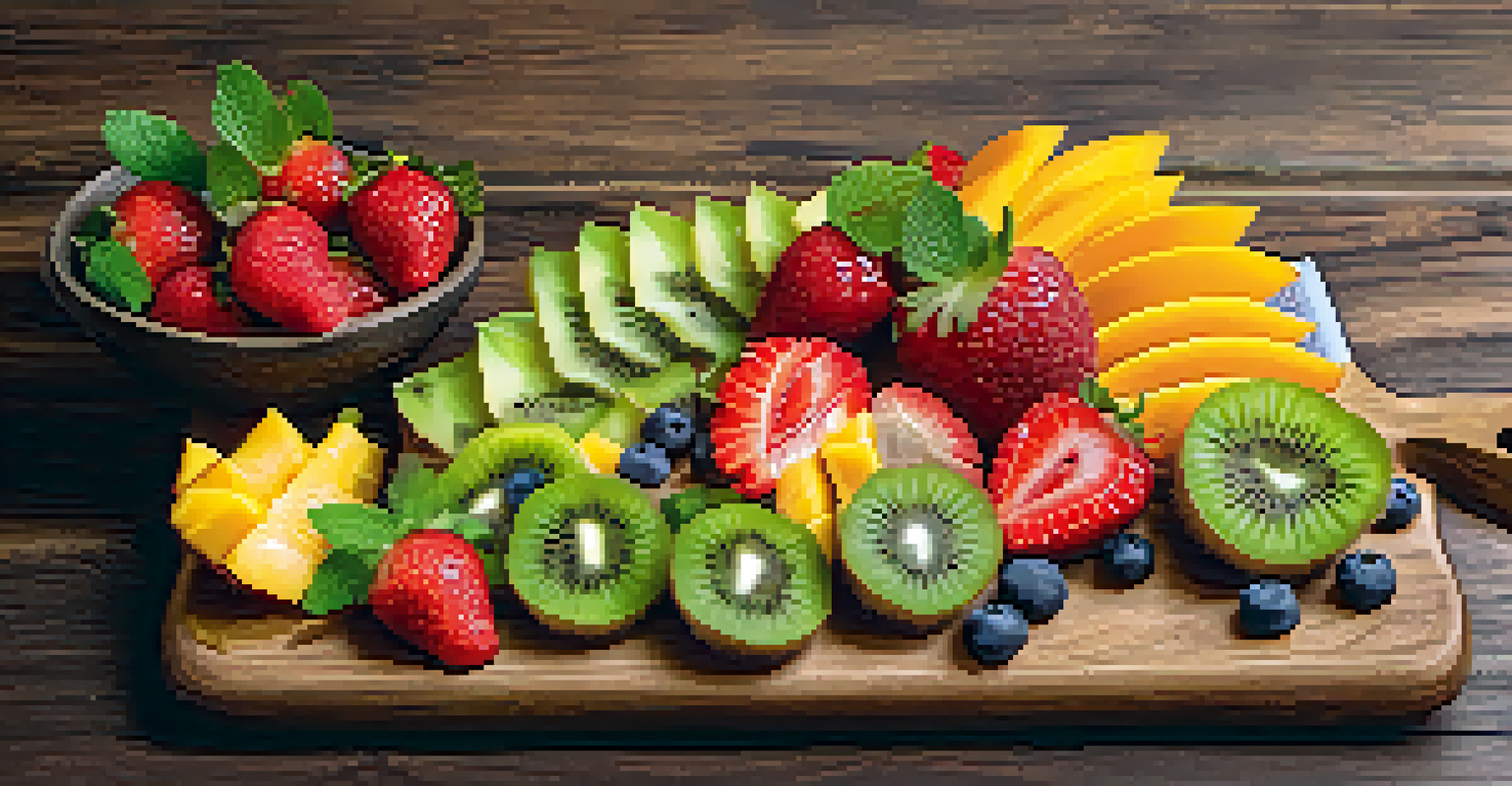Mastering the Basics of Plating: Raw Food Presentation Tips

Understanding the Importance of Food Presentation
Food presentation is the art of arranging food on a plate to enhance its appeal. Just like a well-composed photograph, the way you present your dish can evoke emotions and stimulate appetite. A beautiful presentation can transform a simple meal into an extraordinary dining experience.
Food is not just what we eat, but how we present it.
In raw food cuisine, where fresh ingredients and vibrant colors are key, presentation plays a crucial role. The visual appeal can make a difference in how the dish is perceived, especially when using colorful fruits and vegetables. This is where mastering plating techniques can elevate your culinary creations.
Moreover, a well-presented dish can encourage healthier eating habits. When food looks good, people are more likely to enjoy it and share it with others. This is especially important in raw food, where the emphasis is on natural beauty and nutritional benefits.
Choosing the Right Plate for Your Dish
The choice of plate can greatly influence the overall presentation of your dish. Opt for plates that complement the colors and textures of your raw ingredients. For example, a dark plate can make bright vegetables pop, while a white plate offers a clean canvas for showcasing vibrant colors.

Additionally, consider the size and shape of the plate. A larger plate can provide a sense of space, allowing you to arrange food artfully without overcrowding. Conversely, smaller plates can create an intimate dining experience and encourage diners to focus on the details of each bite.
Food Presentation Enhances Appeal
The way food is arranged can evoke emotions and stimulate appetite, turning a simple meal into an extraordinary experience.
Don't forget about texture as well! Plates with interesting textures can add depth to your presentation, creating a more dynamic visual experience. Remember, the right plate sets the stage for your culinary masterpiece.
Color Combinations that Captivate the Eye
Color is a powerful tool in food presentation. When plating raw food, aim for a balance of colors that are pleasing to the eye. Incorporating a variety of colors not only enhances visual appeal but also indicates a range of nutrients, making the dish more inviting.
People eat with their eyes first.
For example, think about combining bright greens from leafy vegetables with the warm reds and yellows of peppers and tomatoes. This contrast not only looks appetizing but also highlights the freshness of your ingredients. Arranging these colors in a harmonious way can create an eye-catching display.
Remember, the goal is to create a vibrant palette that draws attention and encourages the diner to explore what’s on the plate. A visually appealing dish can elevate the eating experience and make your raw food creations truly memorable.
Incorporating Shapes and Textures in Presentation
In raw food plating, shapes and textures can add an exciting dimension to your presentation. Using a mix of round, square, and triangular components can create visual interest and guide the diner’s eye across the plate. Think about how you can cut vegetables into different shapes for added flair.
Textures also play a vital role; combining crunchy, creamy, and juicy elements can make each bite a delightful experience. For instance, pairing crispy raw carrots with creamy avocado can create a delightful contrast. This variety not only enhances the presentation but also engages the palate.
Choosing the Right Plate Matters
The choice of plate impacts food presentation, with colors, sizes, and textures playing crucial roles in showcasing the dish.
Experiment with layering ingredients to add height and sophistication to your dish. A tower of colorful veggies or a stack of sliced fruits can be both visually appealing and enjoyable to eat, inviting diners to dig in.
Using Garnishes to Elevate Your Dish
Garnishes can take your raw food presentation to the next level. Fresh herbs, edible flowers, or a sprinkle of seeds not only enhance the visual appeal but also add flavor and texture. A few strategically placed garnishes can transform a simple plate into a work of art.
When choosing garnishes, think about complementary flavors and colors. For instance, a sprig of basil can add a pop of green and a burst of flavor to a raw tomato salad. Additionally, edible flowers like nasturtiums can introduce vibrant colors and a hint of peppery taste.
However, moderation is key. Too many garnishes can overwhelm the dish and distract from the main ingredients. Aim for a thoughtful balance that enhances the overall presentation without overshadowing the beautiful raw food you’ve carefully prepared.
Arranging Food for Maximum Impact
The arrangement of food on the plate can significantly affect how it is perceived. To create maximum impact, consider the principles of balance and focal points. A well-placed main item, like a beautifully sliced avocado, can serve as the focal point, drawing the eye to the dish.
Think about using the rule of thirds, a principle borrowed from photography. Instead of placing the main item in the center, try positioning it off-center to create a more dynamic composition. This approach can lead to a more interesting and engaging presentation.
Simplicity Elevates Dining Experience
Embracing a minimalist approach in plating allows the natural beauty of raw ingredients to shine, creating a more refined dining experience.
Additionally, allow some negative space on the plate; this can help your dish 'breathe' and prevents it from feeling cluttered. A thoughtful arrangement invites diners to appreciate each element of the dish and encourages them to savor the experience.
Keeping It Simple: Less is More
One of the most effective plating tips is to embrace simplicity. A minimalist approach can often lead to stunning presentations that highlight the beauty of the raw ingredients. Focus on a few key elements rather than overcrowding the plate with too many components.
When you simplify your presentation, you allow the natural colors and textures of the food to shine. This not only makes the dish more visually appealing but also emphasizes the quality of the ingredients. Remember, the goal is to create a dish that is as delicious as it is beautiful.

A simple presentation can also make the dining experience feel more refined and sophisticated. By letting the ingredients speak for themselves, you create a more intimate connection between the diner and the food.
Practice and Experiment: Find Your Style
Mastering raw food plating takes practice, so don’t be afraid to experiment! Try different arrangements, colors, and garnishes until you find a style that resonates with you. The more you practice, the more confident you will become in your plating skills.
Consider keeping a visual diary of your creations. Documenting your progress can help you track what works and what doesn’t, serving as a source of inspiration for future dishes. Plus, sharing your plating journey on social media can connect you with a community of fellow food lovers.
Food Presentation Enhances Appeal
A well-presented dish can transform a simple meal into an extraordinary dining experience, making it more enjoyable and shareable.
Ultimately, the best plating style is the one that reflects your personality and values. Embrace your creativity and let your passion for raw food shine through in every dish you present.